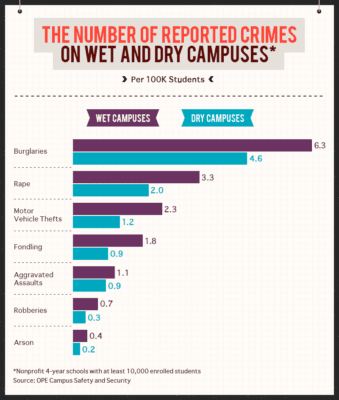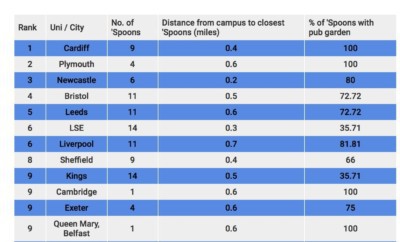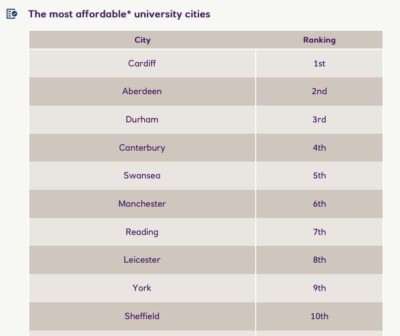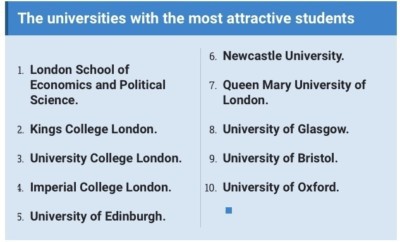Not all university league tables are as sane and rational as others. Ahead of the publication of this year’s Sunday Times ranking (you can see last year’s here) and this conference to mark the 10th anniversary of the Complete University Guide, both of which are serious landmarks in the cycle of the proper business of university rankings, I thought it would be helpful to highlight some of the also rans.
Now some may recall this earlier ranking of the top 10 dumbest rankings ever:
- Spiked! Free Speech University Ranking – although I may have previously suggested this is the best ranking ever, I’m now pretty sure the opposite is true.
- Student Sex League – sadly the compilers of this one seem to have been abstaining for a couple of years but it remains a very silly ranking indeed.
- Webometrics – I commented on this exciting league table recently but am still at a loss to get underneath its methodology, which does seem to be completely incomprehensible.
- U-Multirank – massively expensive, not at all comprehensive and of extremely questionable benefit. And arguably not actually a ranking either.
- 50 under 50 – A rather arbitrary looking age-based list of universities – really not a very good idea.
- People and Planet – in the same league as the free speech ranking – campaigning and subjectivity dressed up with dodgy data.
- Astronaut alumni – a rather limited ranking this.
- Graduate rich list – who wouldn’t want to know which university has produced the most millionaires? No-one, you would hope. Sadly not.
- University Challenge winners – This one’s not been updated for a while but is probably unnecessary, given that we all know who will be on top.
- The Golden Age – as yet unpublished but already breaking into the top 10, this not at all arbitrary list offers a “round-up of the top 100 universities founded between 1945 and 1966” It all sounds a bit Simon Bates (one for those in their golden years that) but the great news for those who drop out of the under 50 list is that they are bound to appear in this one. Hurrah!
Things, I am not wholly pleased to say, have moved on.
Dumb and dumber
This interesting report on incidents of various kinds on university campuses in the US compares data across those with different regulatory regimes covering alcohol and drugs:
While colleges may have varying penalties and policies regulating the presence of alcohol on campus, the term “dry campus” refers to a campus where the consumption of alcohol on school property is wholly prohibited, regardless of whether individuals are of legal drinking age. This is contrasted with wet campuses, which permit consuming alcohol and are subject to individual campus rules on alcohol use.
We wanted to see what the data said, if anything, about how universities’ drug and alcohol policies affected their crime rates. To do this, we used the Office of Postsecondary Education (OPE) Campus Safety and Security crime data, narrowing our focus to nonprofit four-year colleges with at least 10,000 enrolled students. Of the colleges included in our sample, just over 73 percent were wet campuses, while roughly 27 percent were dry.

On the face of it then it does rather look like “dry” campuses are somewhat safer places to be. It’s a handy ranking of sorts.
Keeping it classy then and courtesy of the Tab we have the Wetherspoons university ranking. This top drawer university league table ranks institutions by the number of nearby ‘Spoons, proximity to said watering hole and, crucially, the percentage of these outstanding public houses which have a beer garden.

Cardiff tops the charts with an impressive nine branches in the city and the fourth closest ‘Spoons from campus. Also, every single one of the Wetherspoons has a pub garden, meaning you can soak up that Welsh weather with a pint in hand.
Plymouth came a close second, showing that you don’t have to be in the Russell Group to top the league tables.
Newcastle drew in third but with the closest ‘Spoons to campus, just 0.2 miles away.
The top 10 also includes Sheffield, Cambridge, Bristol and Leeds, amongst others.
Bath brings up the rear of the rankings, with a pitiful single ‘Spoons that also doesn’t have a beer garden. Sussex students will also be disappointed to know that their campus is 4.2 miles from the nearest Wetherspoons, taking the spontaneity out of Steak Club Tuesdays.
Cardiff must be very proud.
And then we have the Natwest Student Living Index which claims to rank the ‘most affordable’ university cities:

According to the table affordability is calculated by dividing students’ average monthly living and accommodation costs by average monthly income. Pretty scientific stuff I’m sure we’ll all agree. Reassuringly for university leaders everywhere is the finding in the survey that students spend over three times more hours studying than socialising. In addition:
Studying vs. socialising in more detail:
- The average student spends 91.7 hours a month attending lectures, completing coursework or at the library, compared with 27.4 hours a month on average socialising.
- Students in Cambridge and Oxford spend more time studying than any other university city, whereas those in London and Aberystwyth study the least.
- Reading and St Andrews are the most social cities, where students spend over 10 hours more time socialising than the average student each month.
Helpful data this for everyone.
Dumber Still
That noted home of higher education news The S*n has a report on a dating app (which is very unlikely to have been looking for any free publicity so I won’t name it here) which has exploited its data in an interesting way. The app:
looked at where the most matches – known as “crushes” on its app – are made based on postcode data, and has linked that up to the nearest universities to find the UK’s most attractive students.
So, which universities have the most “attractive students” then?

Again, all pretty scientific.
Dumbest of all
In what must be a first in the history of university rankings a university league table methodology has transferred from the UK to the US. Every other example has seen the ideas flowing from West to East across the Atlantic so it is unfortunate to say the least that the first such example is based on the dumbest UK ranking ever, number 1 in the list above, the so-called ‘Free Speech’ ranking. Based on the most spurious methodology ever – it makes the ‘Spoons list look like a model of sound statistical practice – this daft endeavour has been copied, traffic lights and all by the so-called “Foundation for Individual Rights in Education”.

So for the dumbest new ranking around why not check out the Fire free speech database.













How about some cross-ranking thinking here.
LSE and KCL both boast attractive students; are both London based (so high-socialising compared to studying); and both appear in the top ten in the Spoons ranking.
Conclusion: given enough social time in your nearby Spoons, you rate your fellow students as attractive. Which could actually make sense!
What is wrong with the Top 50 under 50 ranking? Without regional, age or subject rankings all we would ever see are small, rich and old universities on the ranking.
Philosophy101 Test paper
You have 30 minutes to discuss the validity of the following statement:
“This article is an example of ‘Russell’s paradox'”.
Does anyone finish secondary school thinking, “I hope I get into one of the best unis under 50”? Some things take time.